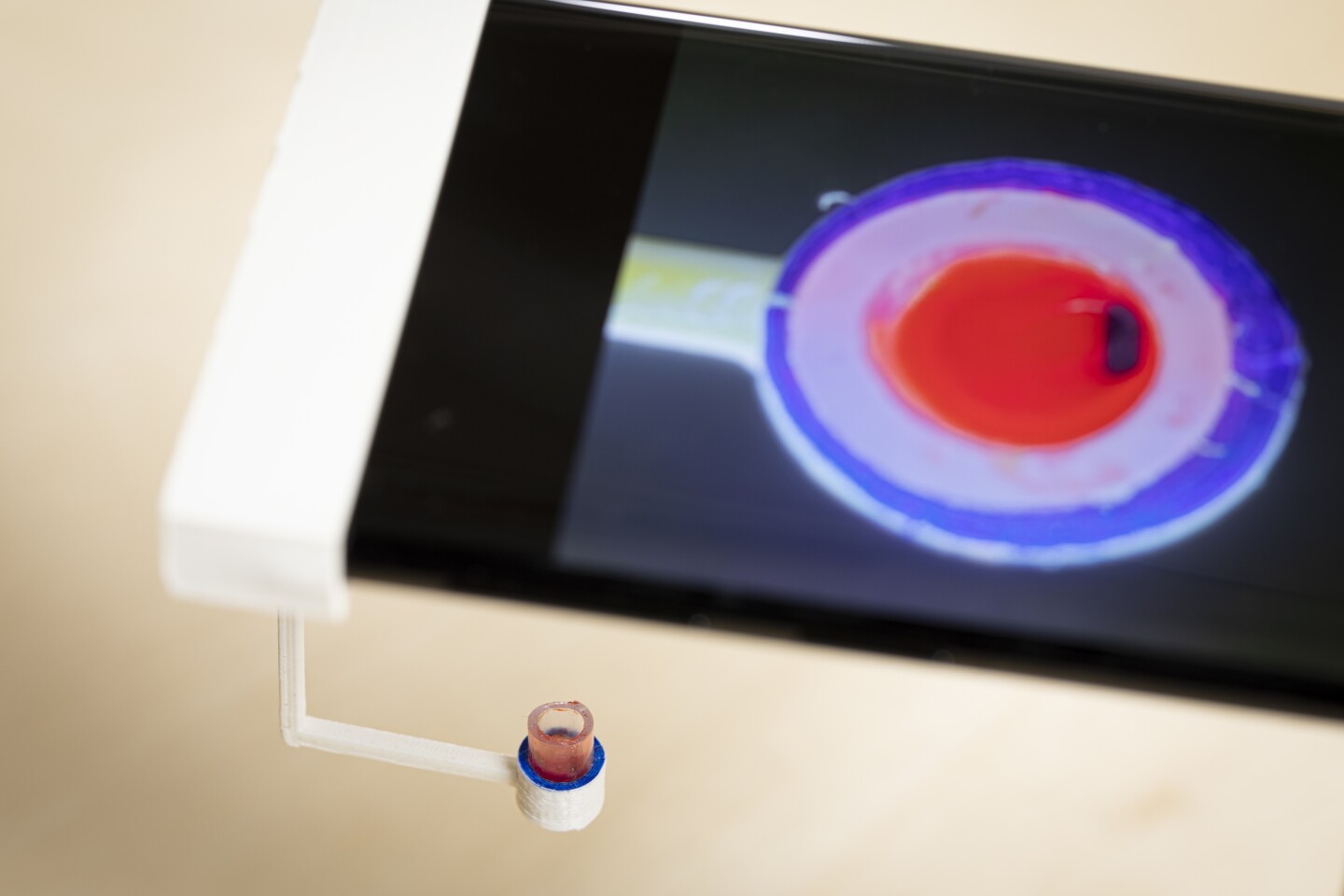People who are using blood-thinning medications regularly have to check if their dosage needs adjusting. And while doing so currently involves lab tests or expensive home systems, a simple smartphone-based setup may soon be able to perform the task.
Because of a patient’s ongoing physiological changes, what was initially an ideal dosage of a medication such as warfarin may become not-so-ideal as time passes. The drug could end up keeping the individual’s blood from clotting in the event of a laceration, or it may allow potentially fatal blood clots to form within their arteries.
Traditional lab tests analyze blood samples to check if the “clottability” of a medicated individual’s blood is still within the normal, safe range. If it isn’t, their dosage is either increased or decreased accordingly.
Led by doctoral student Justin Chan, Dr. Kelly Michaelsen and Prof. Shyam Gollakota, scientists at the University of Washington set out to bring such testing to the patient’s own smartphone. The resulting prototype system incorporates a low-cost plastic device which mounts on one end of the phone, suspending a small cup below the phone’s camera.

Mark Stone/University of Washington
For each test, the user places a drop of their blood in the cup, along with a tiny copper particle and a chemical which causes blood to clot. An app then activates the phone’s vibration motor, which shakes the cup and its contents.
The smartphone’s camera monitors the movements of the copper particle, which moves back and forth within the cup as long as the blood is in a liquid state. Once the particle stops moving, it means the blood has clotted.
The software is therefore able to calculate the patient’s “prothrombin time” (PT) – which is the amount of time that it takes for a clot to form – along with their “international normalized ratio” (INR), which is based on their PT. If the app determines that the PT/INR doesn’t fall within the safe zone, the patient will be advised to inform their physician.
When the technology was used to analyze blood samples drawn from 80 anonymized patients, its result were found to be in the accuracy range of those obtained via traditional testing techniques. Commercialization opportunities are now being pursued.
“Almost every smartphone from the past decade has a vibration motor and a camera,” says Gollakota. “This means that almost everyone who has a phone can use this […] It’s basically the holy grail of PT/INR testing. It makes it frugal and accessible to millions of people, even where resources are very limited.”
The research is described in a paper that was recently published in the journal Nature Communications.
Source: University of Washington
Source of Article